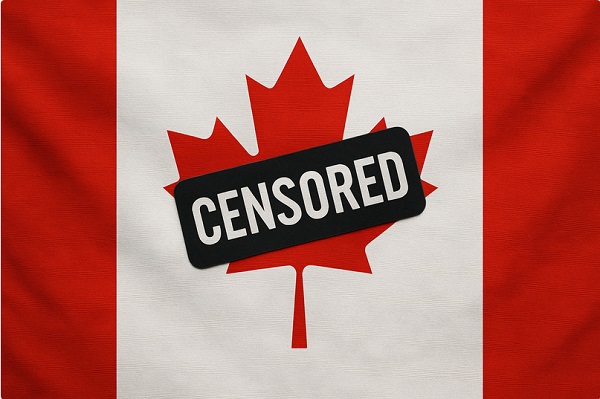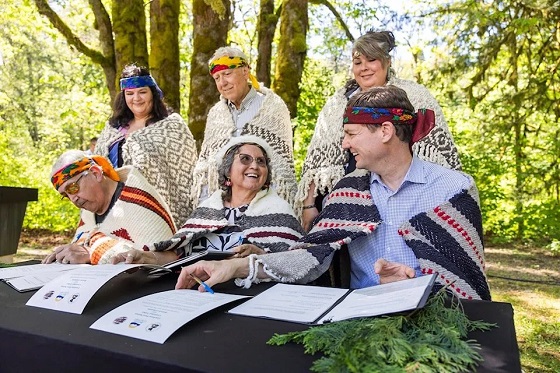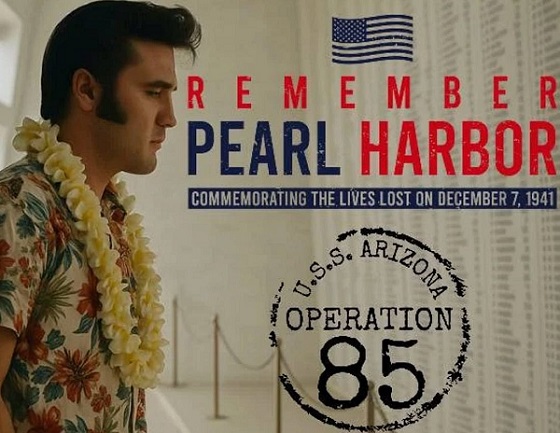National
Red Deer – Lacombe MP Blaine Calkins calls on Prime Minister Justin Trudeau to resign

What We Know About Trudeau’s Latest Ethics Scandal
BLAINE CALKINS
Over the past several weeks Canadians have been shocked at the details coming to light regarding Justin Trudeau’s WE Scandal. Justin Trudeau and the Kielburgers have been happy to benefit from each other for years. While they are quick to downplay their relationship, the facts tell a different story. According to WE Charity, Justin Trudeau and his family have participated in over 50 WE Events where they have been able to share their political message with young Canadians.
In 2017 WE created a campaign style ad featuring Justin Trudeau for Canada 150 and even pressured employees to go to a political event for the Minister of Finance in his Toronto riding. The Kielburger brothers have donated to the Liberal Party in the past, and under the Trudeau government WE has received upwards of $5.5 million in government funding.
This reciprocal relationship is concerning all on its own, before even considering the current scandal regarding the Canada Student Service Grant, Justin Trudeau and WE. The twists and turns in the story can be difficult to track, but it is clear that Justin Trudeau and former Finance Minister Bill Morneau have once again failed to live up to their legal obligations laid out in Canada’s conflict of interest laws. Here is what we know so far.
In April, WE sent an unsolicited proposal for a youth entrepreneurship program to Minister Chagger and Minister Ng. Ten days later WE received a call from Rachel Wernick, a senior bureaucrat with Employment and Social Development Canada (ESDC) about the yet to be announced Canada Student Service Grant (CSSG). When the program was announced to the public a few days later WE co-founder Craig Kielburger sent Ms. Wernick a proposal to administer the grant that same day.
According to the Kielburgers someone at the Prime Minister’s Office (PMO) contacted them the next day about delivering the program, which they later recanted claiming it was a public servant who contacted them. Ms. Wernick is credited as being the public servant who recommended that WE was the only organization that could deliver the program.
On June 25th WE Charity was announced as the partner for the $900 million CSSG program, and Canadians were told they would receive $19.5 million to administer it. When asked, Trudeau suggested there was no conflict of interest because he and his wife had never been paid by the organization. A few days later Conservatives asked the Auditor General to probe the deal since parliamentary oversight was hindered by the program being outsourced, and due to concern over the well documented relationship between Trudeau and the Kielburgers.
By July 3rd Mark and Craig Kielburger announced that WE would be giving up the contract to administer the CSSG. On the same day, the Ethics Commissioner confirmed that he would be starting an investigation into Justin Trudeau for the third time. Less than a week later WE confirmed that the Prime Minister’s Mother, Margaret Trudeau had been paid $312,000 for 28 appearances since 2016 and that his brother, Alexandre Trudeau, was paid $40,000 for 8 events in 2017-2018. They also acknowledged that the Prime Minister’s wife, Sophie Gregoire Trudeau had received $1,400 for an appearance in 2012.
We later found out that on top of those fees WE Charity also paid an additional $212,846 in expenses between the three members of the Trudeau family. This brings the total remuneration to over $566,000. This revelation, in part, led to the Conservatives writing to the Commissioner of the RCMP to request that they look into this matter as it pertains to potential criminal code violations.
The Prime Minister isn’t the only one with an apparent conflict of interest in this matter, with former Minister Morneau also having close family ties with WE. Like the Prime Minister, he did not recuse himself despite the fact that his one daughter works for WE and another has been a speaker in the past and received a book endorsement. This led to the Ethics Commissioner launching an investigation into former Minister Morneau as well.
At an appearance before the Finance Committee former Minister Morneau would later go on to acknowledge that he and his wife had recently made two large donations, roughly $50,0000 each, and that he had also just written a cheque for over $41,000 to reimburse WE for expenses he and his family incurred on two vacations to Africa and South America, where they visited WE projects. WE later confirmed that the complementary trip was offered to former Minister Morneau and his family because of their history of significant donations to similar programs. These revelations led to the Conservative caucus calling for the now former Minister to resign.
The Finance Committee and the Ethics Committee began to look into this latest scandal, and the testimony and information they have received has painted a confusing and troubling picture. They uncovered a number of very concerning details before the Prime Minister prorogued Parliament in order to shut down the committees.
· WE stood to collect $45.53 million in fees, over double what was initially stated.
· The program, originally announced at over $900 million, was actually contracted out at $544 million instead. Why the discrepancy?
· The Clerk of the Privy Council stated that there were no red flags when considering WE, but that the Public Service didn’t probe the organizations finances. This is quite odd.
· The President of the Public Service Alliance disputed that only WE could have delivered the CSSG, stating that to say the Public Service was unable to was insulting. He pointed to the various government grant programs, Canada Summer Jobs and the Canada Service Corps as comparable programs. The theory that only WE could handle the program was further dismantled when it turned out that they had to subcontract part of the program because they weren’t able to deliver it in French.
· The contract for the CSSG wasn’t actually with WE Charity, but with WE Charity Foundation, a shell foundation that had no previous experience in delivering these types of programs.
· The former Chair of the Board at WE Charity testified that she had been forced to resign by Craig Kielburger for requesting financial documents from WE Executives to justify the layoff of hundreds of employees.
· The Kielburger brothers testified, claiming that they were running the program as a favour to Canada, and that their organization was to be reimbursed for expenses, but not make money off of the program. In a leaked document, a draft budget dated May 4th outlined some expenses including for staff salary. This included 175 program managers at $30,0000 each for 4.5 months work, ten supervisors at $45,000 each for 5.5months work, five group leaders at $70,000 each for 6 months work, and two project leaders for $125,000 for eight months work.
· WE Charity started to incur eligible expenses on May 5th, despite Cabinet not approving the program until May 22nd. This was being done with the full knowledge of ESDC, and allegedly at the financial liability of WE.
· Trudeau testified that he only found out about WE’s involvement on May 8th, shortly before it was set to be discussed at Cabinet. He claims that he removed it from the agenda and asked the public service to complete additional due diligence given his family connection to WE. He did not contact the Ethics Commissioner despite the concerns. This additional due diligence did not unearth any of the problems disclosed by the former Chair of the Board. It is noteworthy that no Minister, prior to the Prime Minister making his claim, had a story that would corroborate this feeble explanation.
The Prime Minister’s Chief of Staff confirmed that a handful of employees in PMO were aware of WE’s involvement and had interactions with the organization in the lead up to the approval. This included an interaction on May 5th, the day WE started incurring eligible expenses. So far, every time someone has come forward to try and explain away the Liberal’s latest mess, Canadians are left with more questions than when they started. Canadians deserve answers, and my Conservative colleagues and I are committed to finding them using every tool at our disposal.
While the studies at committee may have been temporarily halted by Trudeau’s prorogation Conservatives will continue to investigate this matter, and pursue every whiff of corruption like when we called on the Elections Commissioner to look into the political benefits that the Liberals have been given by WE. While the Prime Minister may be attempting to prevent Canadians from knowing the truth, Members of the Finance committee received thousands of heavily redacted documents from the Liberal government on the same day that Trudeau prorogued Parliament. They paint a very different picture of how WE came to be selected for this program than the one that the Liberals have offered up.
These documents suggest that the Minister of Diversity and Inclusion and Youth told WE to develop a proposal for a summer service opportunity before the CSSG was even announced. They go on to claim that the former Minister of Finance was “besties” with WE and that senior members of the Prime Minister’s office were involved in the development of the program and were having conversations with WE from an early stage. You can see these documents for yourself at wedocuments.ca.
The timeline of Mr. Trudeau’s version of events simply doesn’t add up. The CSSG was announced on April 22nd. A member of PMO spoke with WE about their proposal on May 5th, the same day they started to charge expenses for administering the program, but Cabinet wouldn’t approve the program for two and a half weeks.
Why was a charity that had to recently lay off hundreds of employees due to financial hardship related to COVID-19 so willing to accept the liability of starting the program without approval? Why were they so sure they would be approved? Why were they told they could start charging expenses before approval?
To answer that, you only need to look at the cozy relationship between Justin Trudeau, former Minister of Finance, Bill Morneau, the Liberal Party and WE. Now that the former Minister Bill Morneau has resigned and more than 5000 pages of documents have been released for review, Canadians are hungrier for that truth than ever before. The Liberals are banking on Canadians forgetting about this scandal during their prorogation and hoping that they can change the channel later this month with a new Throne Speech, but it isn’t going to work. Despite prorogation and all of the confusion and misdirection, one thing is absolutely clear – Justin Trudeau must resign for his part in this scandal.
Censorship Industrial Complex
Ottawa’s New Hate Law Goes Too Far

From the Frontier Centre for Public Policy
By Lee Harding
Ottawa says Bill C-9 fights hate. Critics say it turns ordinary disagreement into a potential crime.
Discriminatory hate is not a good thing. Neither, however, is the latest bill by the federal Liberal government meant to fight it. Civil liberties organizations and conservative commentators warn that Bill C-9 could do more to chill legitimate speech than curb actual hate.
Bill C-9 creates a new offence allowing up to life imprisonment for acts motivated by hatred against identifiable groups. It also creates new crimes for intimidation or obstruction near places of worship or community buildings used by identifiable groups. The bill adds a new hate propaganda offence for displaying terrorism or hate symbols.
The Canadian Civil Liberties Association (CCLA) warns the legislation “risks criminalizing some forms of protected speech and peaceful protest—two cornerstones of a free and democratic society—around tens of thousands of community gathering spaces in Canada.” The CCLA sees no need to add to existing hate laws.
Bill C-9 also removes the requirement that the Attorney General consent to lay charges for existing hate propaganda offences. The Canadian Constitution Foundation (CCF) calls this a major flaw, noting it removes “an important safeguard for freedom of expression that has been part of Canada’s law for decades.” Without that safeguard, decisions to prosecute may depend more on local political pressures and less on consistent national standards.
Strange as it sounds, hatred just will not be what it used to be if this legislation passes. The core problem begins with how the bill redefines the term itself.
Previously, the Supreme Court of Canada said hatred requires “extreme manifestations” of detestation or vilification that involve destruction, abhorrence or portraying groups as subhuman or innately evil. Instead, Bill C-9 defines hatred as “detestation or vilification,” stronger than “disdain or dislike.” That is a notably lower threshold. This shift means that ordinary political disagreement or sharp criticism could now be treated as criminal hatred, putting a wide range of protected expression at real risk.
The bill also punishes a hateful motivation more than the underlying crime. For example, if a criminal conviction prompted a sentence of two years to less than five years, a hateful motivation would add as much as an additional five years of jail time.
On paper, most Canadians may assume they will never be affected by these offences. In practice, the definition of “hate” is already stretched far beyond genuine threats or violence.
Two years ago, the 1 Million March for Children took place across Canada to protest the teaching of transgender concepts to schoolchildren, especially the very young. Although such opposition is a valid position, unions, LGBT advocates and even Newfoundland and Labrador Conservatives adopted the “No Space For Hate” slogan in response to the march. That label now gets applied far beyond real extremism.
Public pressure also shapes how police respond to protests. If citizens with traditional values protest a drag queen story hour near a public library, attendees may demand that police lay charges and accuse officers of implicit hatred if they refuse. The practical result is clear: officers may feel institutional pressure to lay charges to avoid being accused of bias, regardless of whether any genuine threat or harm occurred.
Police, some of whom take part in Pride week or work in stations decorated with rainbow colours in June, may be wary of appearing insensitive or intolerant. There have also been cases where residents involved in home invasion incidents were charged, and courts later determined whether excessive force was used. In a similar way, officers may lay charges first and allow the courts to sort out whether a protest crossed a line. Identity-related considerations are included in many workplace “sensitivity training” programs, and these broader cultural trends may influence how such situations are viewed. In practice, this could mean that protests viewed as ideologically unfashionable face a higher risk of criminal sanction than those aligned with current political priorities.
If a demonstrator is charged and convicted for hate, the Liberal government could present the prosecution as a matter for the justice system rather than political discretion. It may say, “It was never our choice to charge or convict these people. The system is doing its job. We must fight hate everywhere.”
Provincial governments that support prosecution will be shielded by the inability to show discretion, while those that would prefer to let matters drop will be unable to intervene. Either way, the bill could increase tensions between Ottawa and the provinces. This could effectively centralize political authority over hate-related prosecutions in Ottawa, regardless of regional differences in values or enforcement priorities.
The bill also raises concerns about how symbols are interpreted. While most Canadians would associate the term “hate symbol” with a swastika, some have linked Canada’s former flag to extremism. The Canadian Anti-Hate Network did so in 2022 in an educational resource entitled “Confronting and preventing hate in Canadian schools.”
The flag, last used nationally in 1965, was listed under “hate-promoting symbols” for its alleged use by the “alt-right/Canada First movement” to recall when Canada was predominantly white. “Its usage in modern times is an indicator of hate-promoting beliefs,” the resource insisted. If a historic Canadian symbol can be reclassified this easily, it shows how subjective and unstable the definition of a “hate symbol” could become under this bill.
These trends suggest the legislation jeopardizes not only symbols associated with Canada’s past, but also the values that supported open debate and free expression. Taken together, these changes do not merely target hateful behaviour. They create a legal framework that can be stretched to police dissent and suppress unpopular viewpoints. Rest in peace, free speech.
Lee Harding is a research fellow for the Frontier Centre for Public Policy.
International
Trump admin wants to help Canadian woman rethink euthanasia, Glenn Beck says

From LifeSiteNews
Jolene Van Alstine, approved for state-sanctioned euthanasia after enduring long wait times to receive care for a rare parathyroid disease, is in need of a passport to enter the U.S.
Well-known American media personality Glenn Beck says he has been in touch with the U.S. State Department to help a Canadian woman in Saskatchewan reconsider euthanasia after she sought assisted suicide due to long medical wait times to address her health problems.
As reported by LifeSiteNews on Tuesday, Canadian woman Jolene Van Alstine was approved to die by state-sanctioned euthanasia because she has had to endure long wait times to get what she considers to be proper care for a rare parathyroid disease.
Van Alstine’s condition, normocalcemic primary hyperparathyroidism (nPHPT), causes her to experience vomiting, nausea, and bone pain.
Her cause caught the attention of Beck and many other prominent Americans and Canadians on X.
In an update today on X, Beck said, “Jolene does not have a passport to gain legal entry into the U.S., but my team has been in touch with President (Donald) Trump’s State Department.”
“All I can say for now is they are aware of the urgent life-saving need, and we had a very positive call,” he added.
Beck had said before that he was in “contact with Jolene and her husband” and that he had “surgeons who emailed us standing by to help her.”
As of press time, neither the State Department nor other officials have not yet confirmed Beck’s claim that he has been in touch with them.
As a result of Van Alstine’s frustrations with the healthcare system, she applied for Canada’s Medical Assistance in Dying (MAiD) and was approved for January 7.
As reported by LifeSiteNews, over 23,000 Canadians have died while on wait lists for medical care as Prime Minister Mark Carney’s Liberal government is focused on euthanasia expansions.
A new Euthanasia Prevention Coalition report revealed that Canada has euthanized 90,000 people since 2016, the year it was legalized.
As reported by LifeSiteNews recently, a Conservative MP’s private member’s bill that, if passed, would ban euthanasia for people with mental illness received the full support of the Euthanasia Prevention Coalition.
-

 espionage2 days ago
espionage2 days agoWestern Campuses Help Build China’s Digital Dragnet With U.S. Tax Funds, Study Warns
-

 Focal Points2 days ago
Focal Points2 days agoCommon Vaccines Linked to 38-50% Increased Risk of Dementia and Alzheimer’s
-

 Automotive1 day ago
Automotive1 day agoThe $50 Billion Question: EVs Never Delivered What Ottawa Promised
-

 Business2 days ago
Business2 days agoCanada invests $34 million in Chinese drones now considered to be ‘high security risks’
-

 Alberta14 hours ago
Alberta14 hours agoAlberta introducing three “all-season resort areas” to provide more summer activities in Alberta’s mountain parks
-

 Economy2 days ago
Economy2 days agoAffordable housing out of reach everywhere in Canada
-

 Business23 hours ago
Business23 hours agoStorm clouds of uncertainty as BC courts deal another blow to industry and investment
-

 Health2 days ago
Health2 days agoThe Data That Doesn’t Exist




